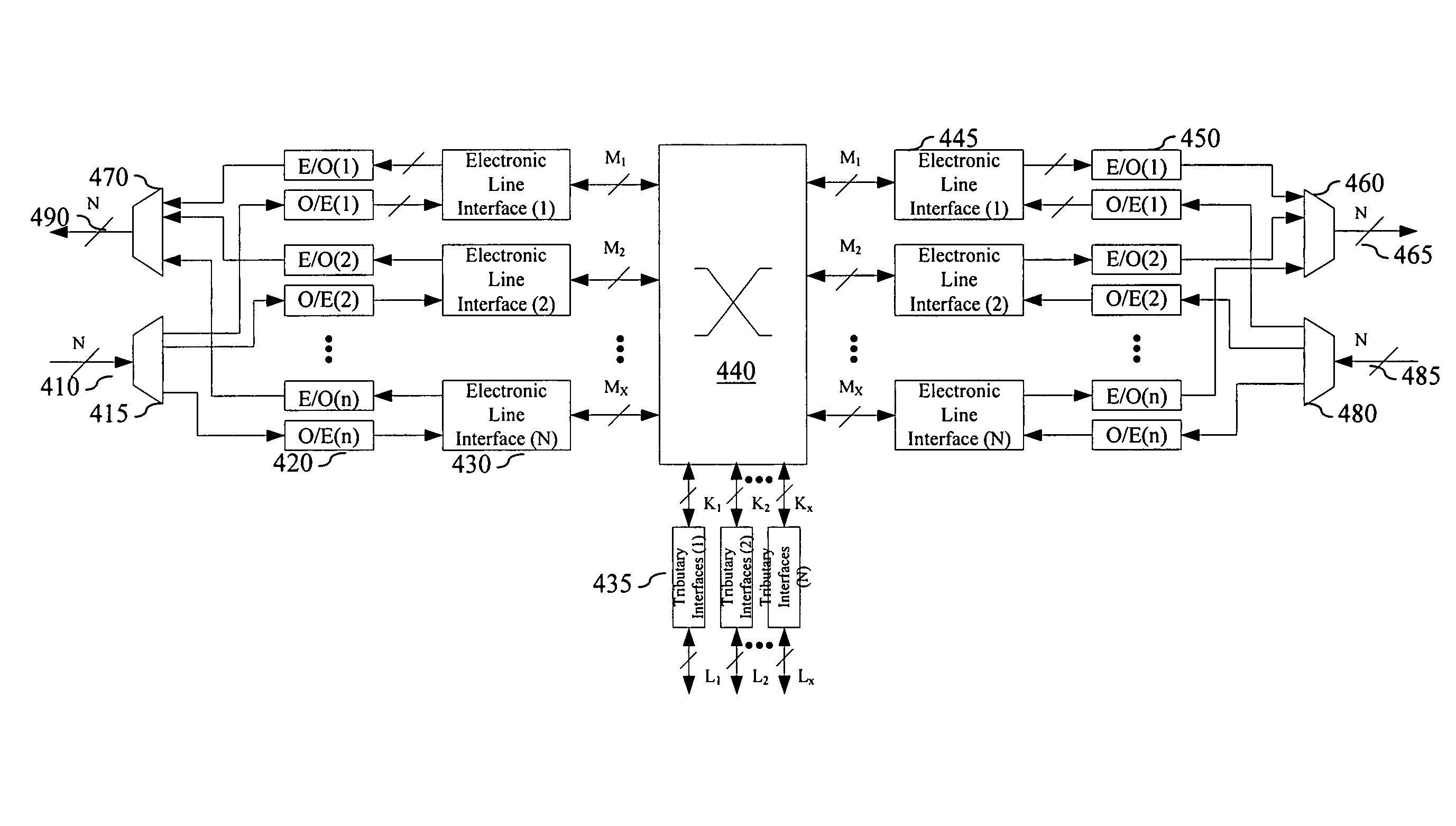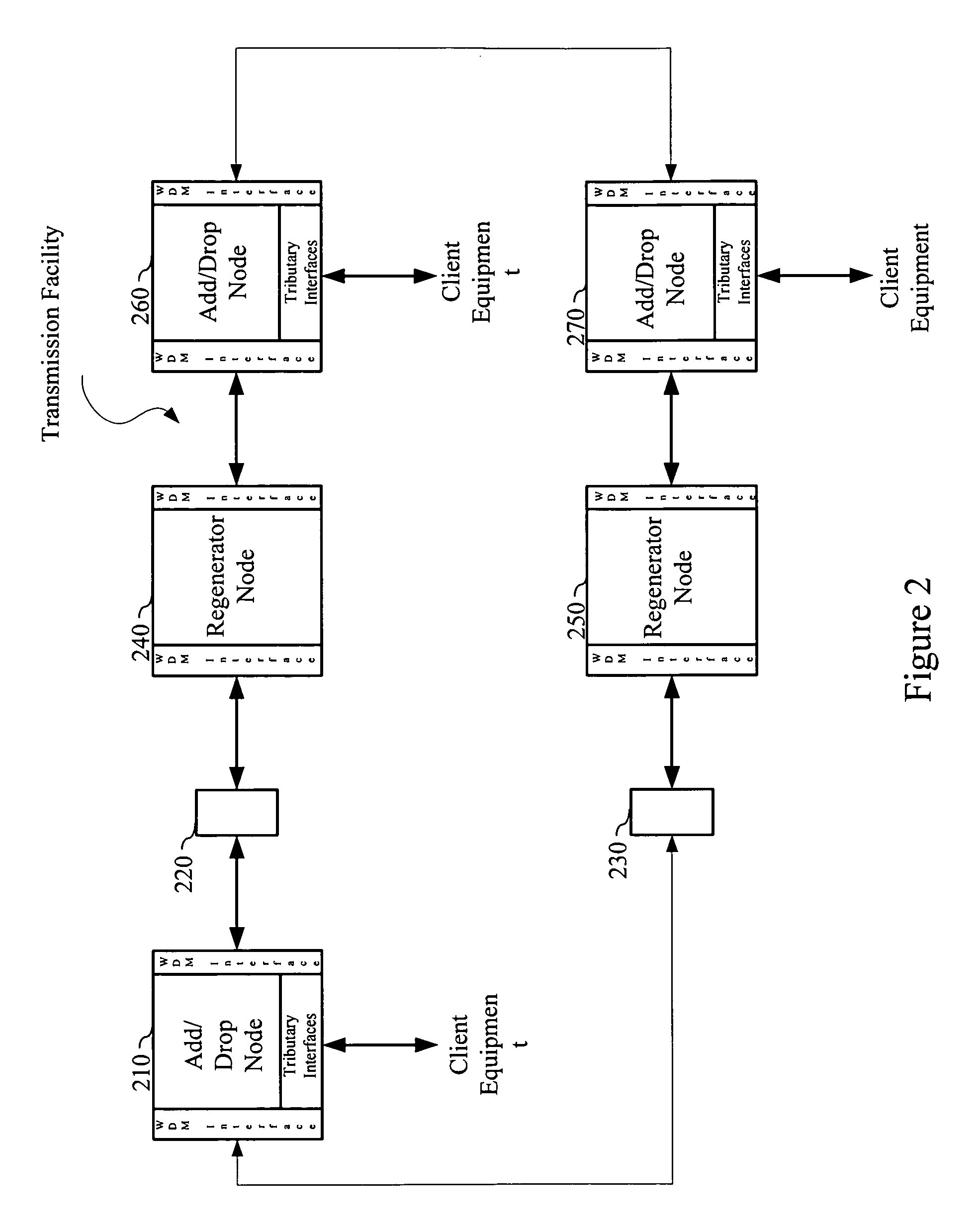Modular adaptation and configuration of a network node architecture
a network node and module technology, applied in the field of module adaptation and configuration of network node architectures, can solve the problems of inability to easily reconfigure the regenerator node to provide add/drop functionality or terminal node operations, and the terminal node cannot be easily reconfigured to operate as a regenerator node, so as to reduce the requirement for cabling, increase reliability, and cost-effective low-power design
- Summary
- Abstract
- Description
- Claims
- Application Information
AI Technical Summary
Benefits of technology
Problems solved by technology
Method used
Image
Examples
Embodiment Construction
[0033]The present invention provides a system, apparatus and method for modularly adapting a network node architecture to function in one of a plurality of potential node types. The architecture includes a configurable switching element, and a plurality of modules, potentially having integrated optics and various types of interfaces, which allow an architectural configuration of the node to be adapted within the base architecture. The module interfaces may be optical or electrical and be used to construct various different types of nodes including regenerators, add / drop nodes, terminal nodes, and multi-way nodes using the same base architecture.
[0034]The following description is set forth for purpose of explanation in order to provide an understanding of the invention. However, it is apparent that one skilled in the art will recognize that embodiments of the present invention, some of which are described below, may be incorporated into a number of different computing systems and dev...
PUM
 Login to View More
Login to View More Abstract
Description
Claims
Application Information
 Login to View More
Login to View More - R&D
- Intellectual Property
- Life Sciences
- Materials
- Tech Scout
- Unparalleled Data Quality
- Higher Quality Content
- 60% Fewer Hallucinations
Browse by: Latest US Patents, China's latest patents, Technical Efficacy Thesaurus, Application Domain, Technology Topic, Popular Technical Reports.
© 2025 PatSnap. All rights reserved.Legal|Privacy policy|Modern Slavery Act Transparency Statement|Sitemap|About US| Contact US: help@patsnap.com



